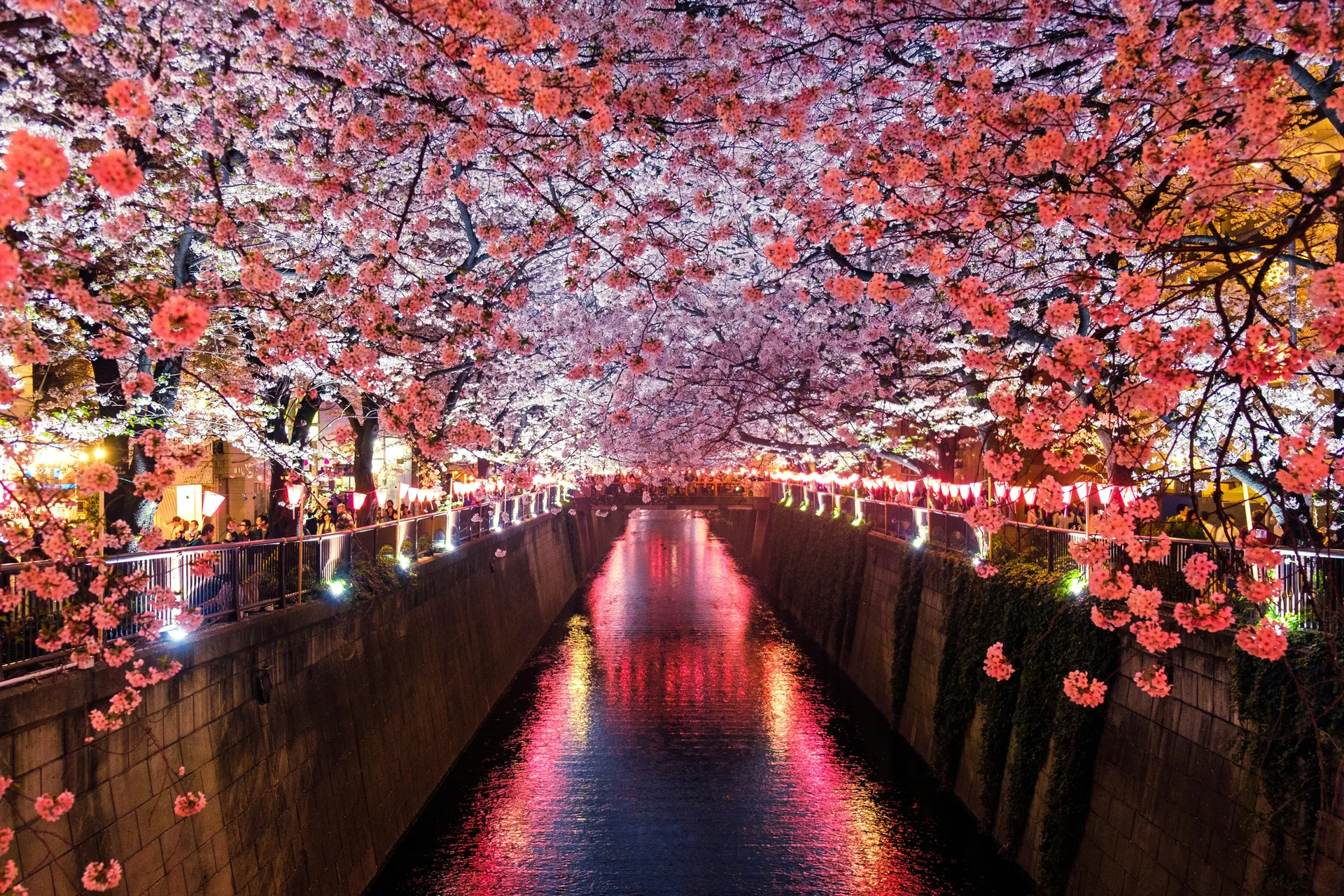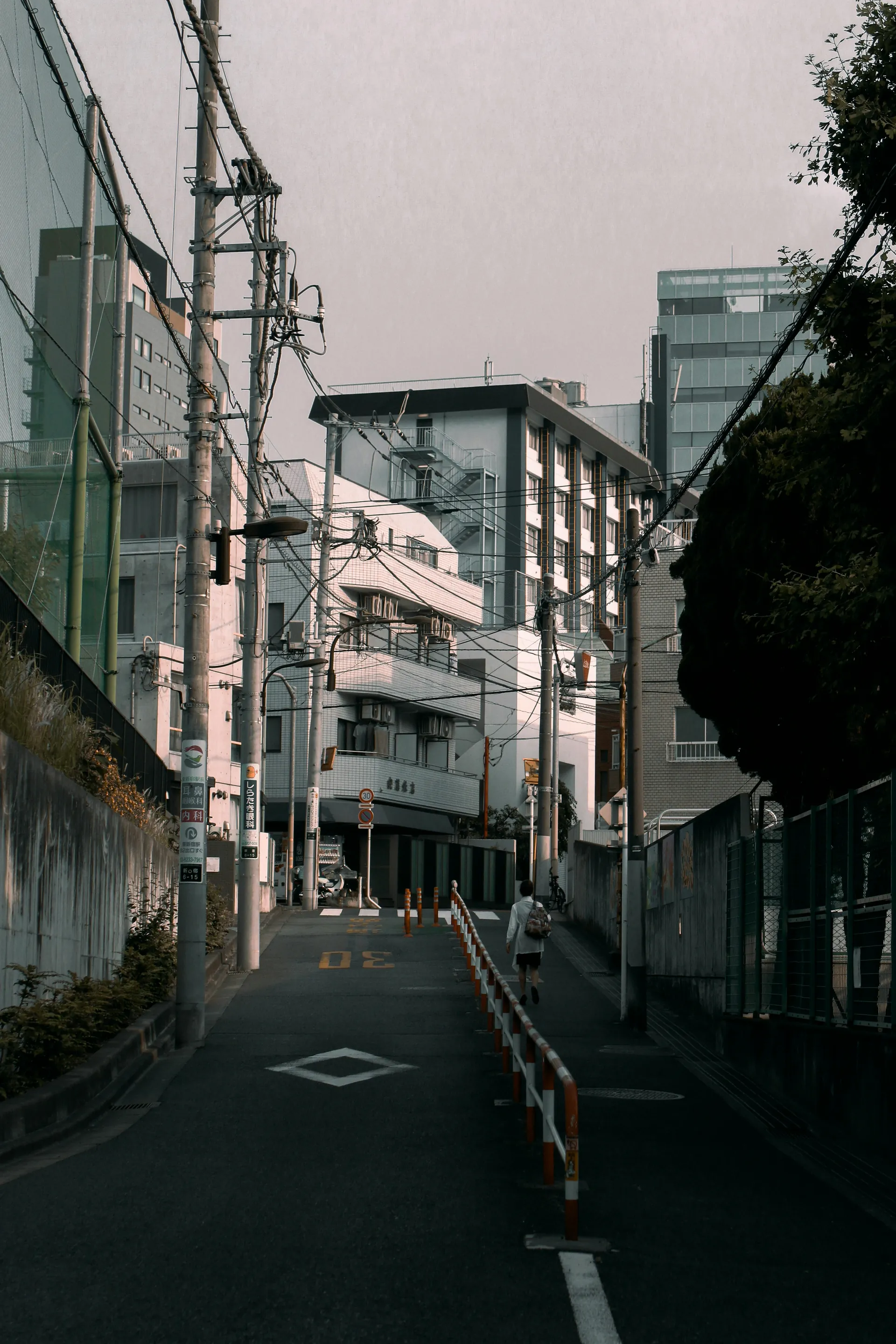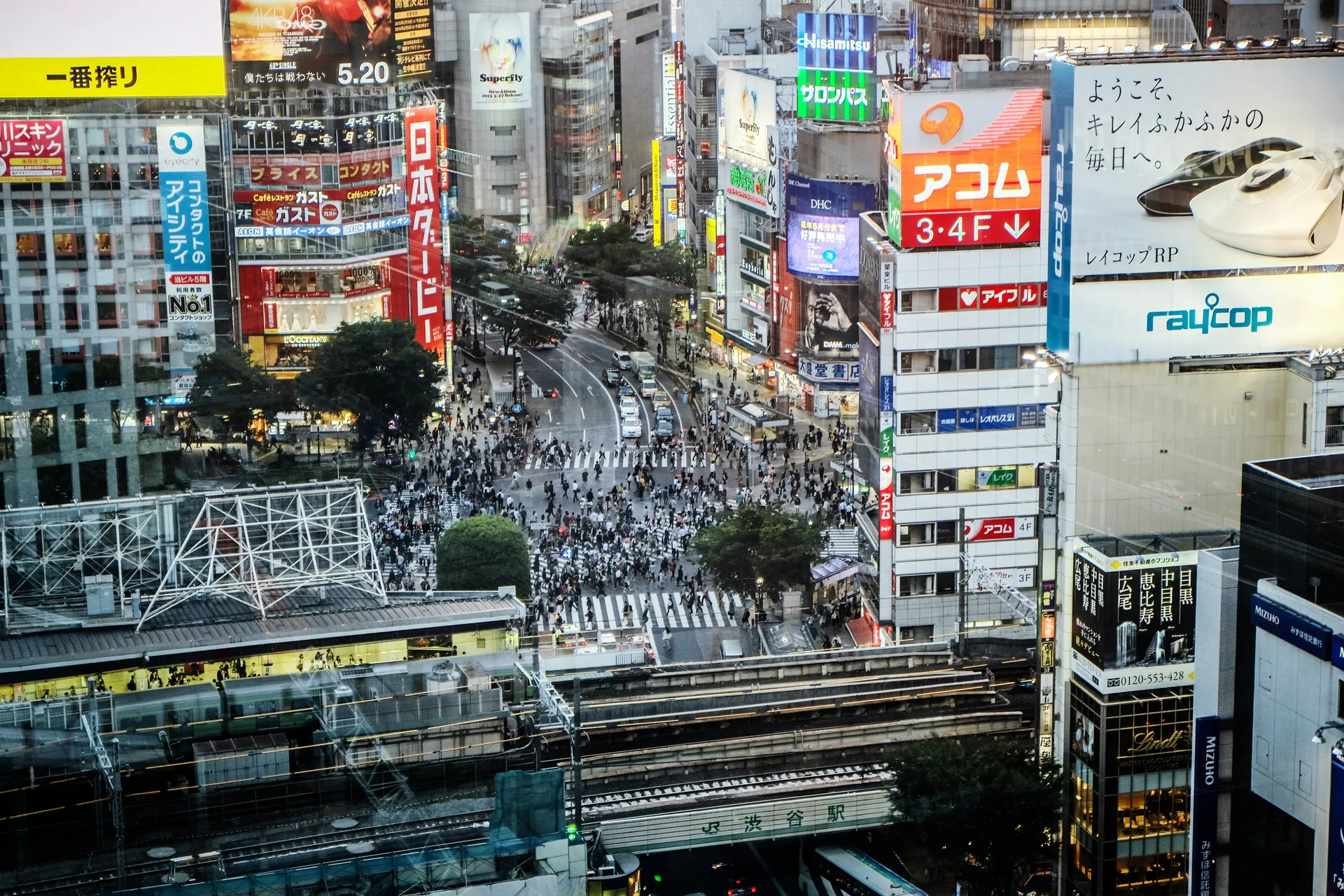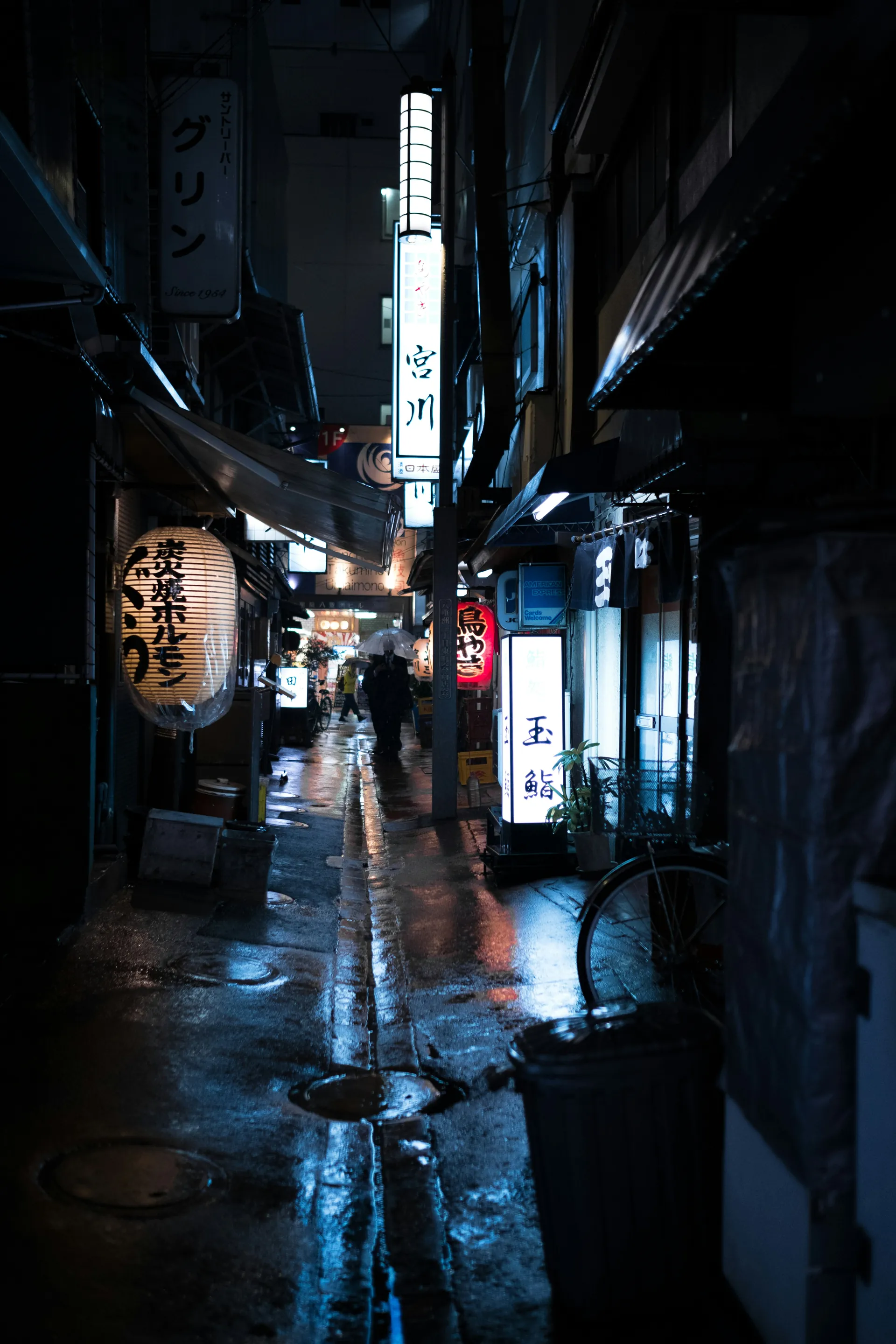Table of Contents
Japan, a land of vibrant cities, ancient temples, and breathtaking natural beauty, offers an unforgettable experience for every traveler. Whether you're an adult eager to explore the rich cultural heritage of Tokyo, Kyoto, or Osaka, or seeking the peaceful retreat of a hot spring resort, Japan truly has something for everyone.
From the iconic Fushimi Inari Taisha Shrine, adorned with thousands of vermilion torii gates, to the tranquil gardens of the Kyoto Imperial Palace, each destination reveals a unique chapter of Japan's history and culture. Nature enthusiasts will be captivated by the majestic views of Mount Fuji, the enchanting cherry blossom season, and the serene landscapes of the Fuji-Hakone-Izu National Park.
Whether planning a day trip or an extended tour, Japan’s diverse attractions, such as Universal Studios Japan, the Hiroshima Peace Memorial Park, and the historic Himeji Castle, promise endless fascination. This guide will help you explore the top tourist spots in Japan, ensuring your journey to this enchanting country is unforgettable.
Cities & Best Places to Visit in Japan
Tokyo
Tokyo, Japan's capital and largest city, is a bustling metropolis that seamlessly blends traditional and modern culture. Here, you can visit the Imperial Palace, the main residence of the Emperor of Japan, and explore the beautiful Shinjuku Gyoen National Garden, which offers stunning views, especially during cherry blossom season.
For a glimpse into Tokyo's vibrant lifestyle, head to the Shibuya Crossing, one of the busiest intersections in the world, or visit the Tokyo National Museum to delve into Japan's rich history and art. The city also boasts a variety of unique districts, such as Harajuku, known for its fashion, and Asakusa, with its historic Senso-ji Temple.
Kyoto
Kyoto, once Japan's imperial capital, is renowned for its traditional Japanese experiences. The city is home to over a thousand temples, including the famous Kinkaku-ji (Golden Pavilion) and the serene Ryōan-ji with its Zen rock garden.
Kyoto's Maruyama Park is a must-visit during cherry blossom season, and the city's teahouses offer a chance to experience the traditional Japanese tea ceremony. The Fushimi Inari Taisha Shrine, famous for its thousands of vermilion torii gates, is another iconic site.
Kyoto's cultural richness extends to its food, with kaiseki (Japanese haute cuisine) being a highlight.
Osaka
Osaka, Japan's third-largest city, is often referred to as "Tenka no Daidokoro" or the nation's kitchen, due to its culinary delights. This city is a food lover's paradise, with popular dishes like takoyaki and okonomiyaki.
Osaka is also home to the Osaka Aquarium Kaiyukan, one of the largest aquariums in the world, and the Universal Studios Japan theme park. The city's vibrant entertainment district, Dotonbori, is known for its neon lights, street food, and unique attractions.
Hiroshima
Hiroshima, a city with a poignant history, is a significant destination for those interested in history and peace. The Hiroshima Peace Memorial Park and the Atomic Bomb Dome are must-visit sites to understand the city's past and its commitment to peace.
The city is also famous for its delicious food, particularly okonomiyaki and oysters. A short ferry ride from Hiroshima takes you to Miyajima Island, known for its beautiful scenery and the famous Itsukushima Shrine, which appears to be floating during high tide.
Fukuoka
Fukuoka, located on the island of Kyushu, is one of the main tourist destinations in southern Japan. The city is renowned for its ancient temples, such as the Dazaifu Tenmangu Shrine, and its delicious cuisine, including tonkotsu ramen and mentaiko (spicy pollock roe). Fukuoka is also conveniently close to the beautiful Dazaifu city and the scenic Sasebo Harbor.
The city's modern attractions include the Fukuoka Tower and the Fukuoka Asian Art Museum.
Kanazawa
Kanazawa, often referred to as "Little Kyoto," is a mid-sized city offering a rich blend of historical and modern attractions. The city is home to some of the finest contemporary art museums in Japan and boasts a lively eating and drinking culture.
The Kenrokuen Garden, one of Japan's Three Great Gardens, is a must-visit, along with the Higashi Chaya District, which retains much of its Edo-era charm. Kanazawa is easily accessible by Shinkansen from Tokyo and Kyoto.
Naoshima
Naoshima, an island in the Seto Inland Sea, has transformed into a world-class center for contemporary art and architecture. The island features numerous museums, including the Chichu Art Museum and the Benesse House, as well as unique installations and sculptures integrated into the natural landscape. Naoshima is also known for its serene beaches and traditional villages, making it an ideal destination for those seeking a blend of art, nature, and rural Japan.
Other Notable Destinations
Beyond these major cities, Japan boasts many other notable destinations. Himeji Castle, a UNESCO World Heritage Site, is one of Japan's most beautiful and well-preserved castles.
The Fuji-Hakone-Izu National Park offers stunning views of Mount Fuji and is a great place for day trips and outdoor activities. Nikko, located near Tokyo, is famous for its ornate temples and shrines, including the Toshogu Shrine, another UNESCO World Heritage Site.
For a unique experience, visit the hot spring resorts in the Japanese Alps or the scenic island of Yakushima, known for its lush forests and waterfalls.
Best Time to Visit Japan

Spring (March to May)
Spring is one of the most popular times to visit Japan, and for good reason. This season, spanning from March to May, is when the famous cherry blossoms (sakura) bloom, creating breathtakingly beautiful landscapes across the country.
The mild weather, with temperatures ranging from cool to mild, makes it ideal for outdoor activities and sightseeing. During this period, popular spots like Ueno Park in Tokyo, Maruyama Park in Kyoto, and the Philosopher's Path in Kyoto are particularly stunning.
However, it's worth noting that this time is also very crowded, especially during the peak blooming weeks.
Autumn (September to November)
Autumn in Japan is another highly recommended time to visit, lasting from September to November. The weather is generally pleasant, with comfortable temperatures and minimal rainfall.
This period is known for its vibrant fall foliage, as the leaves of maple and gingko trees turn brilliant shades of red, yellow, and orange. The Japanese Alps and areas like Nikko and Kyoto offer spectacular views during this time.
Autumn is also a great time for hiking and enjoying farm-fresh Japanese cuisine, as it is the harvest season.
Summer (June to August)
Summer in Japan, from June to August, is characterized by hot and humid weather, making it less ideal for sightseeing in the cities. However, this season is perfect for outdoor enthusiasts who want to explore the mountains of the Japanese Alps and Hokkaido.
The summer months also host numerous local festivals and fireworks displays, adding to the festive atmosphere. It's important to note that August is peak summer and also a time when schools are on summer break, leading to increased travel and crowded tourist spots.
Winter (December to February)
Winter in Japan, from December to February, offers a unique and serene experience. While it can be snowy and cold, especially in the north and in mountainous regions like Hokkaido, the scenery is often breathtaking. This season is ideal for those who enjoy winter sports, hot springs (onsen), and festive events.
The northern parts of Japan, such as Hokkaido, are particularly popular during this time for their snowy landscapes and winter festivals. In contrast, cities like Tokyo experience milder winters with minimal snowfall.
Rainy Season
The rainy season in Japan typically occurs from the end of May until mid-July. While this period might seem less appealing due to the frequent rain, it’s actually a great opportunity to avoid the crowds and enjoy lower prices. The rain transforms the landscape, bringing out lush greenery, which makes it an ideal time for nature lovers and those who want to explore Japan's gardens and parks in full bloom.
National Holidays and Festivals
When planning your trip, it's important to consider Japan's national holidays and festivals. Events like Shogatsu (Japanese New Year), Obon (celebrated in mid-August or mid-July depending on the region), and the Golden Week (from April 29 to May 5) are particularly busy periods for both residents and tourists.
Although these times can be crowded, they provide unique opportunities to experience Japan's rich cultural traditions and enjoy vibrant festivities.
Emergency Contacts for Japan Tourist

Essential Emergency Numbers
When traveling to Japan, it is important to know the essential emergency numbers to ensure your safety and well-being. Here are the key numbers you should memorize:
- Police: Dial 110 to report crimes or accidents. This number is available 24/7 and is your first point of contact for any law enforcement issues.
- Fire/Ambulance: Dial 119 for medical emergencies or to report a fire. It is helpful to know basic Japanese phrases such as "Kaji desu" (There's a fire) or "Kyūkyū desu" (I need an ambulance) to expedite assistance.
- Coast Guard: For emergencies at sea, dial 118. This number is particularly important if you are engaging in any maritime activities.
Using Public Phones and Office Phones
In case you need to use a public phone, remember that public phones in Japan can connect you with emergency services for free. Here’s how to use them:
- Pick up the receiver.
- On a green public phone, press the red button near the base of the phone (grey phones do not have this button).
- Dial the appropriate emergency number (110 for police, 119 for ambulance or fire).
Office Phones and Modern Systems
Some modern office phone systems, especially IP Phone systems, may not be able to dial emergency numbers like 110 or 119. If you are in an office, it is best to ask your colleagues for assistance in contacting emergency services.
Koban Police Boxes
Japan has a network of "koban" police boxes located throughout the country. These koban are small police stations where you can ask for directions, report incidents, or seek help in emergencies. They are particularly useful for tourists who need assistance or guidance.
Non-Emergency Medical Advice
For non-urgent medical advice, you can dial #7119. This service is designed to help you assess whether you require an ambulance or if you can manage the situation on your own.
Japan Visitor Hotline
The Japan Visitor Hotline provides 24/7 support in multiple languages, making it an essential resource for tourists. Whether you're facing an emergency or need general tourist information, this hotline is here to assist.
Embassies and Consulates
In case of an emergency related to your nationality or other specific concerns, having the contact information for your embassy or consulate in Japan is important. Keep these numbers readily available or know how to locate them quickly.
Useful Mobile Apps for Japan

Navigation and Transportation
Navigating Japan's complex transportation system can be daunting, but several apps make it much easier. Here are some of the most useful ones:
Google Maps: This app is indispensable for navigating Japan's cities and public transportation. It provides precise directions for walking, driving, and using public transport, and also helps you discover points of interest and restaurants.
Navitime: While Google Maps is excellent for local navigation, Navitime is more reliable for longer distances and complex routes. It offers detailed train schedules and routes, making it a must-have for traveling across Japan.
SmartEX: This app allows you to book Shinkansen tickets effortlessly, making long-distance travel much more convenient.
Language and Communication
Language barriers can be a significant challenge in Japan, but these apps can help bridge the gap:
Google Translate: This app is a lifesaver for those who do not speak Japanese. It translates text, speech, and even images, helping you navigate menus, signs, and conversations.
Papago: Powered by Naver, Papago offers a conversation mode that allows you to communicate with locals more effectively. It translates speech in real-time, although it may sometimes produce literal translations.
Food and Dining
Discovering and enjoying Japan's culinary delights is easier with these apps:
Tabelog: This app provides an English version for restaurant guides and bookings, helping you find the best places to eat. It includes reviews and ratings to ensure you have a great dining experience.
Ramen Beast: For ramen enthusiasts, this app helps you find the best ramen shops across Japan, complete with reviews and recommendations.
Tours and Activities
Booking local tours and activities is streamlined with these apps:
Klook: This app offers a wide variety of local experiences, including cooking classes, guided day trips, food tours, and ticket sales to popular attractions like Tokyo Tower and Universal Studios Japan. It also has an awards program that allows you to earn points for discounts.
JapanTravel by Navitime: This app provides comprehensive travel guides, including sightseeing recommendations and booking services for various activities and tours.
Practical Utilities
These apps are designed to assist with the practical aspects of your trip:
- Suica Card on Mobile: Manage your Suica card—a prepaid card used for public transportation—directly from your mobile device. This app eliminates the need to carry a physical card, making traveling more convenient.
- Ecbo Cloak: Need to store your luggage while traveling? Ecbo Cloak helps you locate and check the availability of luggage storage facilities across Japan. You can even reserve spots and make payments online.
- Airalo: Stay connected throughout your trip with Airalo’s eSIM services. It offers data plans to ensure you always have internet access.
Safety and Emergency
Ensuring your safety in Japan is vital, and these apps can assist in emergency situations:
- Yurekuru Call: Stay informed with life-saving earthquake alerts through this app. It helps you stay prepared in case of natural disasters.
Safety Tips for Japan Travel

General Safety Precautions
Japan is generally a very safe country, with a low crime rate compared to other nations. However, it is still important to be aware of your surroundings and take some basic precautions to ensure your safety.
Here are a few tips:
- Avoid walking alone in quiet or unlit areas at night, especially if you are not familiar with the area.
- Keep your valuables secure and out of sight. Distribute your cash between your wallet, a pocket, and the hotel safe to minimize losses in case of theft or pickpocketing.
- Be cautious of your drinks and food when out, especially in crowded areas or bars. Never leave your drink unattended and avoid accepting food or drinks from strangers unless you can see them being prepared.
Natural Disasters
Japan is prone to natural disasters such as earthquakes, typhoons, tsunamis, and volcanic eruptions. Here’s how you can prepare and react:
- Familiarize yourself with emergency procedures and evacuation routes. Many public buildings and hotels have clear signs and instructions.
- Download apps or sign up for alerts that provide real-time information on natural disasters. For example, the "Yurekuru Call" app offers earthquake alerts.
- Follow local instructions during an emergency. If you are in a coastal area and a tsunami warning is issued, immediately move to higher ground or follow evacuation routes.
Crime and Theft
While crime is rare in Japan, it is still possible to encounter petty crimes such as bag snatching or pickpocketing. Here’s what you can do:
- Keep an eye on your belongings, especially in crowded areas like train stations and tourist spots. Use secure bags and keep valuables close.
- If you are a victim of theft, report the incident to the nearest koban (police box) or local police station. A police report will be necessary for insurance claims or to replace important documents like passports.
- Make copies of your important documents (e.g., passport, ID, travel insurance) and leave one copy at home. Carry a digital copy with you as well.
Health and Medical Safety
Japan has a high standard of medical care, but there are some specific health concerns to be aware of:
- Be cautious of giant hornets, particularly in rural areas during the summer months. These hornets can be deadly, so seek immediate medical help if you are stung.
- Ensure you have adequate health insurance that covers you in Japan. Some medical procedures may require upfront payment, so it’s important to have the necessary coverage.
Traffic Safety
Japan has strict traffic laws and a safe road environment, but it’s still important to be mindful of local rules:
- Follow pedestrian rules and traffic signals. Jaywalking is strictly enforced in Japan, and fines can be significant.
- If you plan to rent a car, ensure you understand Japanese traffic laws and signs. Driving in Japan can be challenging, especially if you are not familiar with the language.
Emergency Contacts and Resources
In case of an emergency, knowing the right contacts and resources can be important:
- Keep the emergency numbers handy: 110 for police, 119 for fire or ambulance, and 118 for coast guard.
- Know the location of your embassy or consulate in Japan. They can provide assistance with passport issues, medical emergencies, and other critical situations.
- Utilize local resources such as koban police boxes for help with directions, reporting incidents, or seeking general assistance.
Conclusion
As you prepare for your journey to Japan, remember to pack light, wear comfortable shoes, and always carry your passport. Familiarize yourself with Japanese etiquette, such as using chopsticks correctly and avoiding eating or smoking while walking. Stay safe by knowing emergency numbers, being mindful of natural disasters, and respecting local customs.
Utilize helpful mobile apps for navigation, language assistance, and booking activities. Whether you're exploring the vibrant cities of Tokyo and Osaka, the historical sites of Kyoto, or the natural beauty of Mount Fuji, Japan has something for everyone. With these tips, you're ready to embark on an unforgettable adventure.
Start planning your trip today and immerse yourself in the unique culture, stunning landscapes, and warm hospitality of Japan.
FAQ
What are the best airports to fly into for a trip to Tokyo, and how do they compare to flying into Osaka?
For a trip to Tokyo, Haneda Airport (HND) is generally preferred due to its closer proximity to the city and better amenities. Narita Airport (NRT) is also an option, though it is farther away. For Osaka, Kansai International Airport (KIX) is the primary choice, serving Kyoto and Osaka with connections mainly to Asian cities and some international routes.
Which cities in Japan are renowned for their historical districts and traditional architecture?
Cities renowned for their historical districts and traditional architecture in Japan include:
- Takayama with its Old Town
- Kurashiki for its Bikan Historic Quarters
- Kawagoe for its Warehouse District
- Kanazawa's Nagamachi samurai district
- Omihachiman for its Merchant Quarters
Where can I find the most unique and contemporary art destinations in Japan?
For the most unique and contemporary art destinations in Japan, consider the Benesse Art Site, which includes Naoshima, Teshima, and Inujima, known for their contemporary art museums and installations. Additionally, the Hakone and Odawara areas, particularly the Odawara Art Foundation’s Enoura Observatory and the Hakone Open-Air Museum, are notable.
In Tokyo, the Roppongi area, with its "art triangle" including the Mori Art Museum, National Art Center, and 21_21 DESIGN SIGHT, is a significant hub.
What are some of the top destinations for nature lovers and those interested in scenic views in Japan?
Top destinations for nature lovers and those interested in scenic views in Japan include:
- Mt. Fuji: Known for its iconic conical shape and surrounding natural wonders.
- Oze National Park: Featuring marshlands, pristine streams, and picturesque mountains.
- Kamikochi: Boasts stunning mountains, untouched forests, and serene lakes.
- Nikko National Park: Famous for autumn foliage, waterfalls like Kegon Waterfall, and Lake Chuzenji.
- Shiretoko National Park: Offers untouched natural beauty with dramatic snowy scenes and diverse wildlife.




.webp)






